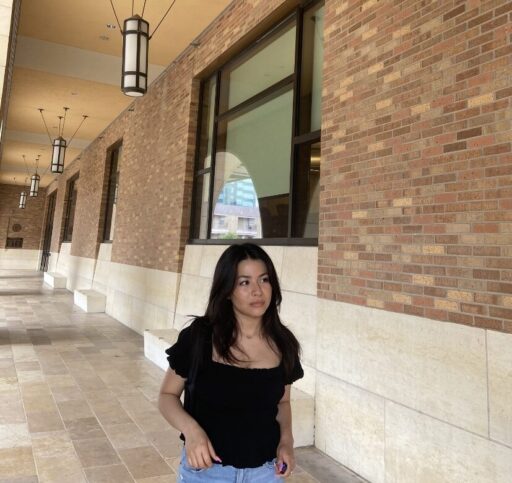How to Accept Payments via SMS to Drive Customers to Finalize a Purchase
As more people shop on their smartphones, businesses are coming up with clever ways to make shopping easy. If you want your small business to stay ahead, consider looking into SMS payments as a smart option.
Text messaging is a highly effective communication channel. With plenty of people around the world always within arm’s reach of their mobile phones, this channel is an excellent way to get your message read, so you can get the sales you need.
We’ll dive deeper into what an SMS payment is, how it works, and when you can benefit the most from this type of payment option.
What are SMS payments?
SMS payments, otherwise known as short message service payments, are a modern alternative to traditional payment methods—such as cash, checks, and credit cards—that allow users to pay with a simple text. It occurs when a purchase is initiated via SMS and completed on a customer’s smartphone.
Instead of requiring consumers to log into a website or wait in long checkout lines, this mobile payment method enables them to complete transactions quickly on a device that’s likely already in hand. This text-to-pay option minimizes the number of actions and channel switching necessary for any buyer to convert, buy again, or pay what they owe.
Even as SMS payments make successful purchases possible in 160 characters or less, they’re still highly secure transactions. Your customers will never have to share personal data (including account details) directly in their text messages so that they won’t be susceptible to any unexpected risks.
How do SMS payments work?
The SMS payment process always begins with a shopper sharing their phone number with your business. Whether you’re using an automated lead-capturing tool or manually requesting and collecting contact information, this first step is necessary for you to reach out.
- Shopper Shares Phone Number: The SMS payment process begins when a shopper provides their phone number to your business. This can be through an automated lead-capturing tool or manual contact collection, as this step is crucial for future communication.
- Customer Opt-in: Once the customer shares their number and agrees to receive texts, your next task is to initiate a payment. This is where tools like Podium Payments come in. They help you guide your customers through the purchase process.
- Sending Payment Link: Using platforms like Podium Payments, you can send your customer a short link through text. This link leads them to a secure payment processing platform.
- View Invoice and Pay: When the customer clicks on the link, they can access their invoice and proceed to make a payment by entering their account details. The process is quick and straightforward.
- Finalizing the Sale: By completing the payment, the sale or bill payment is processed. This step completes the transaction.
- Sending Receipt: To wrap up the process, your business can send a receipt to the customer as confirmation of the payment.
By breaking down the SMS payment process into these steps, you can create a smooth and user-friendly experience for both your business and your customers.
Benefits of SMS Payments
SMS payments are one of the easiest ways for customers to send money in exchange for a product or service. No matter what type of company you own, it can speed up the checkout process and build an easy and efficient customer experience. SMS payments have many benefits including:
1. Convenience
As a business owner, integrating SMS payments can significantly enhance the convenience factor for your customers. With SMS payments, your customers can make transactions using their mobile devices, eliminating the need for them to carry cash or enter credit card information manually. This streamlined process reduces friction during the checkout process, leading to increased customer satisfaction and potentially higher conversion rates.
Whether they’re purchasing products online or paying for services in person, the simplicity of SMS payments can make the overall experience smoother and more enjoyable for your clientele.
2. Accessibility
Consider the diverse range of customers your business serves. By adopting SMS payments, you make your products or services more accessible to a wider audience. People who might not have access to traditional banking services or credit cards can now participate in transactions with just a mobile phone.
This inclusivity not only expands your customer base but also fosters a sense of community and equal opportunity. Your business can become a preferred choice among individuals who value accessible and straightforward payment methods, showcasing your commitment to catering to various customer needs.
3. Security
Security is paramount in today’s digital landscape. Implementing SMS payments provides an added layer of security for both your customers and your business. Unlike physical cards or cash, mobile phones are usually kept close and are equipped with biometric locks or PIN codes. This reduces the chances of unauthorized transactions.
Additionally, SMS notifications for transactions offer real-time updates, allowing customers to immediately address any discrepancies. By offering such a secure payment option, you build trust with your customers and demonstrate your dedication to safeguarding their financial information.
4. Cost-effectiveness
Opting for SMS payments can also be a strategic financial move for your business. Traditional payment methods often involve transaction fees, processing charges, and the costs associated with handling physical cash. SMS payments, on the other hand, can potentially be more cost-effective. The infrastructure required for SMS transactions is usually less complex and more affordable to set up and maintain.
Moreover, the streamlined payment process can increase operational efficiency, reducing the need for extensive manual intervention. This ultimately translates to cost savings that can contribute to your business’s bottom line, allowing you to allocate resources to other critical areas of growth.
Incorporating SMS payments into your business operations offers not only immediate advantages like convenience, accessibility, security, and cost-effectiveness but also position your business at the forefront of modern, customer-centric payment trends. This proactive approach not only enhances customer satisfaction but also signals your commitment to innovation and efficiency in an increasingly competitive market.
The 5 Best SMS Payment Providers for Your Business
As a business owner, choosing the right SMS payment provider is crucial to streamline your payment process and enhance customer satisfaction. Here are five top-tier SMS payment providers that can effectively meet your needs:
1. Podium
If you’re looking for an easy and effective way to handle SMS payments, consider Podium. It’s not just about smooth transactions; it also provides a handy platform to manage customer interactions. With Podium Payments, you can speed up your payment collection, cutting down on late payments and boosting your cash flow. What’s really great is that its user-friendly setup makes it simple for both you and your customers to handle payments without any hassle.
Beyond payments, Podium provides tools for managing reviews, messages, and more, all in one integrated system. This consolidation of services can save you time and enhance your overall customer engagement strategy.
2. Square
Square has established itself as a versatile SMS payment provider that caters to businesses of all sizes. Its point of sale (POS) system allows you to accept payments in-person, while its online invoicing feature enables you to send payment requests directly to your customers’ devices. Square’s seamless integration with e-commerce platforms offers a cohesive experience across various sales channels. The detailed analytics and reporting features further provide insights that can inform your business decisions. With Square, you can diversify your payment options and offer a consistent, convenient payment experience.
3. Stripe
Stripe has earned a reputation for its developer-friendly approach and robust payment infrastructure. If your business operates primarily online, Stripe offers a suite of tools that enable you to integrate SMS payments seamlessly into your website or app. Its customizable payment forms and subscription management capabilities make it suitable for businesses with subscription-based models. Stripe’s focus on security ensures that both you and your customers can trust the payment process, which is essential for building lasting relationships.
4. Payment Cloud
Payment Cloud is an SMS payment provider that specializes in providing solutions for businesses considered high-risk or unconventional. If your business falls into such a category, Payment Cloud can offer tailored payment solutions that cater to your unique needs. From mobile payments to virtual terminals, Payment Cloud’s offerings are designed to accommodate a wide range of industries. This provider’s willingness to work with high-risk businesses can be a game-changer if you’ve faced challenges securing payment services elsewhere.
5. Helcim
Helcim combines SMS payments with a full suite of merchant services, making it an attractive choice for businesses seeking an all-in-one solution. From payment processing to invoicing, Helcim offers features that streamline your financial operations. The SMS payment functionality ensures quick and convenient transactions, while the emphasis on transparent pricing and excellent customer support sets Helcim apart as a reliable partner for your payment needs.
Selecting the right SMS payment provider depends on your business’s unique requirements and goals. Consider factors such as the nature of your business, your preferred sales channels, and the level of customer support you require. By aligning your choice with your business objectives, you can effectively leverage these top SMS payment providers to enhance your payment process and overall customer experience.
How to Accept SMS Payments in 4 Steps:
As a business owner, embracing SMS payments can revolutionize your transaction process, enhancing customer convenience and boosting your bottom line. Here’s a straightforward guide to help you seamlessly integrate SMS payments into your operations:
1. Choose a payment service provider.
The first step in accepting SMS payments is selecting a reliable payment service provider that aligns with your business needs. Research and compare different providers based on factors such as transaction fees, security features, compatibility with your business model, and customer support. Opt for a provider that offers a user-friendly platform and robust security measures, such as Podium, to ensure a smooth and secure payment process for both you and your customers.
2. Set up your account.
Once you’ve chosen a provider, proceed to set up your account. This typically involves providing your business information, verifying your identity, and linking your bank account for seamless fund transfers. Take your time to complete this step accurately, as it lays the foundation for the entire SMS payment process. Thoroughly review the terms and conditions to ensure you’re aware of any fees, payout schedules, or limitations associated with your account.
3. Integrate SMS payment solution.
After setting up your account, it’s time to integrate the SMS payment solution into your existing systems. Depending on your provider, this could involve embedding payment buttons on your website, incorporating APIs(application programming interface) into your mobile app, or configuring your point-of-sale (POS) system for in-person transactions. Ensure that the integration is smooth and thoroughly tested to avoid any technical glitches that could disrupt the payment flow.
4. Communicate and process payments.
With the SMS payment solution integrated, communicate the new payment method to your customers. Update your website, social media platforms, and any relevant marketing materials to inform your audience about the convenient SMS payment option. Train your staff, if necessary, to guide customers through the process if they have any questions.
As payments start coming in, process them promptly and maintain transparent communication with your customers. Send SMS notifications to confirm successful transactions and provide them with purchase receipts. Address any issues or inquiries promptly to build trust and ensure a positive customer experience.
By following these 4 steps, you’ll be well on your way to embracing SMS payments as an integral part of your business’s payment ecosystem. This transition not only enhances your customers’ convenience but also positions your business as a forward-thinking entity in the digital marketplace.
When to Use SMS Payments
As a business owner, strategically incorporating SMS payments can have a significant impact on your operations and customer interactions. Here are three scenarios where utilizing SMS payments can prove exceptionally beneficial:
1. Getting paid for your services.
When it comes to getting paid for the products or services you offer, SMS payments can be a game-changer. Whether you’re a freelancer, consultant, or running a small business, sending payment requests through SMS allows you to promptly receive payments from your clients or customers. This convenience not only speeds up the payment process but also ensures that you’re compensated for your work on time. By offering this hassle-free payment method, you enhance the overall experience for your clients and strengthen your professional image.
2. Chasing a past-due bill.
Dealing with overdue payments can be a challenging aspect of running a business. Utilizing SMS payments in this context can help you effectively manage these situations. You can send friendly payment reminders or past-due notices via SMS, allowing your customers to settle their bills with just a few clicks on their mobile devices. This approach is less intrusive than phone calls and more immediate than emails, making it more likely that customers will respond and rectify their outstanding balances.
3. Extending your SMS marketing efforts.
SMS marketing is a powerful tool for engaging with your customer base, and integrating payments into your SMS campaigns can take your marketing efforts to the next level. For instance, you can send out exclusive offers, promotions, or limited-time deals to your subscribers via SMS, along with a convenient link for them to make a purchase right then and there. This direct and instantaneous connection between your marketing message and the payment process can boost conversion rates and capitalize on the sense of urgency you create.
By recognizing these scenarios and strategically implementing SMS payments, you can enhance your business’s financial efficiency, customer relationships, and marketing impact. Keep in mind that the key is to align the use of SMS payments with your specific business goals and the preferences of your target audience. This approach will not only streamline your operations but also contribute to your business’s growth and success.
Make Texting Your Billing Channel
If you’re a small business owner, adopting text messaging as a billing channel can transform how you engage with your customers and simplify your payment process. With the widespread use of mobile devices, people are more connected than ever. Using text messages for billing brings several benefits including:
- Simplicity: It’s easy for both your business and customers to use.
- Efficiency: It streamlines the entire payment process by consolidating everything in one accessible place
- Convenience: Customers find it effortless, considering the ubiquity of cell phones.
This approach reimagines customer interactions and payment procedures, making it a savvy move for your business.
By integrating texting as a billing channel, you provide your customers with a quick, convenient, and familiar method of making payments. Most individuals carry their phones with them at all times, making it incredibly convenient for them to respond to your billing messages promptly. This immediacy can lead to faster payments and improved cash flow for your business.
Remember to ensure the security of your billing texts by partnering with a reputable payment service provider and implementing necessary security measures. By making texting your billing channel, you tap into a modern, efficient, and customer-centric way of managing payments that can set your business apart and contribute to long-term success.
FAQs:
As a business owner exploring the realm of SMS payments, you might have several questions about how this payment method works and how it can benefit your operations. Here are answers to some common queries:
Q: What are the differences between SMS payment and payment links?
A: SMS payments and payment links both offer convenient ways for customers to make transactions, but they differ in execution. SMS payments involve sending a payment request directly through a text message, where customers can reply with a confirmation or follow a link provided in the message to complete the payment process. Payment links, on the other hand, are URLs shared through various communication channels, including SMS, that direct customers to a secure payment page. While SMS payments occur entirely within the text message conversation, payment links guide customers to an external platform for payment. Choosing between the two depends on your business’s preferences and the payment experience you want to offer.
Q: What is text-to-pay?
A: Text-to-pay is a feature that enables customers to make payments by simply sending a text message. Once a customer receives a text invoice or payment request, they can reply to the message with a designated keyword or code, confirming their intention to pay. The payment is then processed using the payment information linked to their account. This method is particularly useful for businesses that have established relationships with customers and want to provide a frictionless payment process.
Q: What is an SMS payment gateway?
A: An SMS payment gateway is a technology solution that enables businesses to process payments securely through text messages. It acts as an intermediary between your business, your customers, and financial institutions. When a customer initiates a payment through an SMS, the payment gateway facilitates the transaction by securely transmitting payment information, verifying the transaction’s legitimacy, and processing the payment. The gateway also ensures compliance with security standards and regulations to protect both your business and your customers’ sensitive data.
These FAQs provide a glimpse into the world of SMS payments and their associated concepts. By familiarizing yourself with these fundamentals, you can make informed decisions about implementing SMS payments in your business, enhancing customer experience, and staying ahead in the evolving landscape of digital transactions.
Keep reading
Get started today
Ready to grow? Scale your business with an AI-powered lead conversion platform.
















